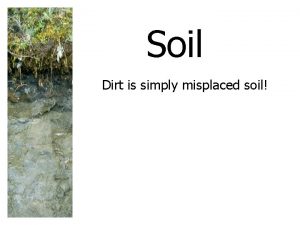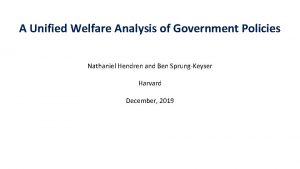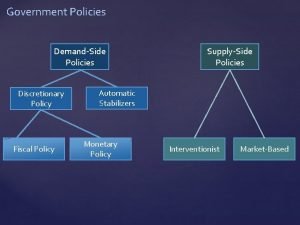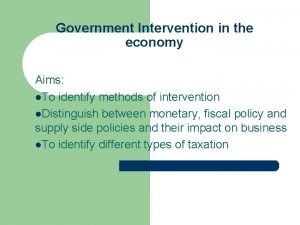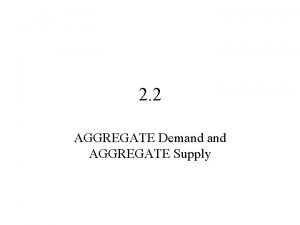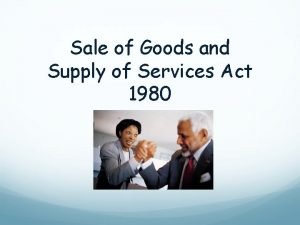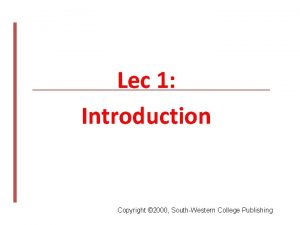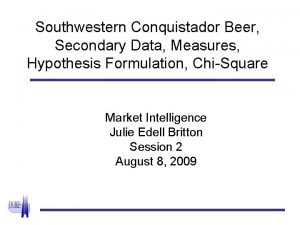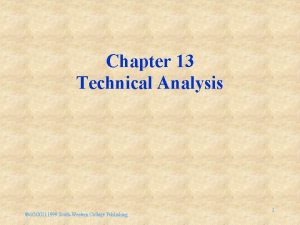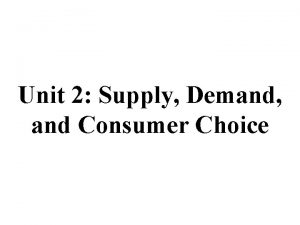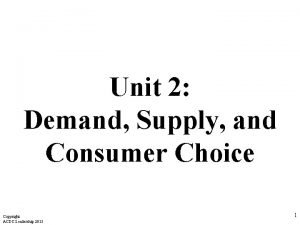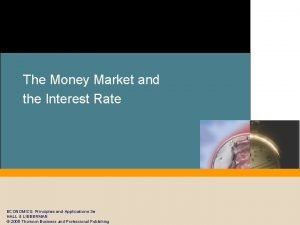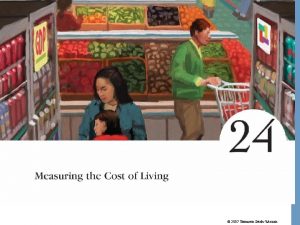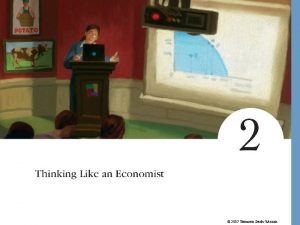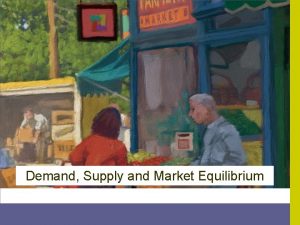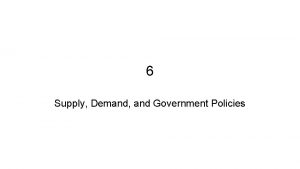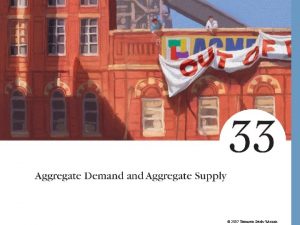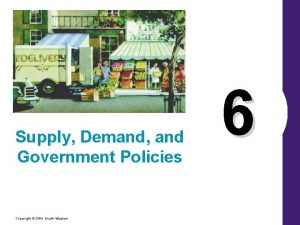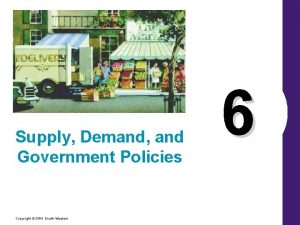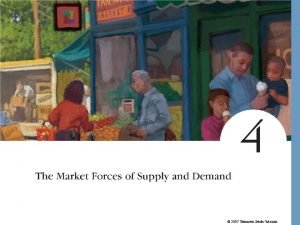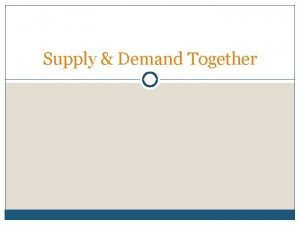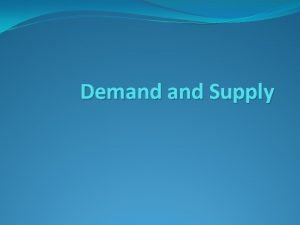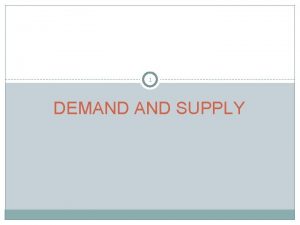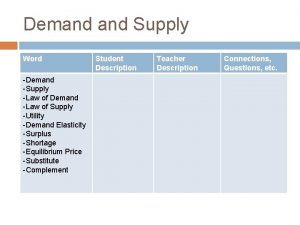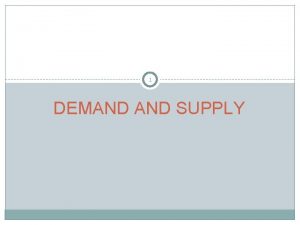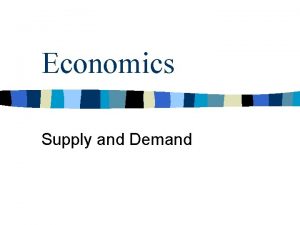2007 Thomson SouthWestern Supply Demand and Government Policies





































- Slides: 37

© 2007 Thomson South-Western

Supply, Demand, and Government Policies • In a free, unregulated market system, market forces establish equilibrium prices and exchange quantities. • While equilibrium conditions may be efficient, it may be true that not everyone is satisfied. • One of the roles of economists is to use their theories to assist in the development of policies. © 2007 Thomson South-Western

CONTROLS ON PRICES • Are usually enacted when policymakers believe the market price is unfair to buyers or sellers. • Result in government-created price ceilings and floors. © 2007 Thomson South-Western

CONTROLS ON PRICES • Price Ceiling – A legal maximum on the price at which a good can be sold. • Price Floor – A legal minimum on the price at which a good can be sold. © 2007 Thomson South-Western

How Price Ceilings Affect Market Outcomes • Two outcomes are possible when the government imposes a price ceiling: • The price ceiling is not binding if set above the equilibrium price. • The price ceiling is binding if set below the equilibrium price, leading to a shortage. © 2007 Thomson South-Western

Figure 1 A Market with a Price Ceiling (a) A Price Ceiling That Is Not Binding Price of Ice-Cream Cone Supply $4 Price ceiling 3 The market clears at $3 and the price ceiling is ineffective. Equilibrium price Demand 0 100 Equilibrium quantity Quantity of Ice-Cream Cones © 2007 Thomson South-Western

Figure 1 A Market with a Price Ceiling (b) A Price Ceiling That Is Binding Price of Ice-Cream Cone Supply Equilibrium price $3 2 Price ceiling Shortage Demand 0 75 125 Quantity supplied Quantity demanded Quantity of Ice-Cream Cones © 2007 Thomson South-Western

How Price Ceilings Affect Market Outcomes • Effects of Price Ceilings • A binding price ceiling creates • Shortages because QD > QS. • Example: Gasoline shortage of the 1970 s • Nonprice rationing • Examples: Long lines, discrimination by sellers © 2007 Thomson South-Western

CASE STUDY: Lines at the Gas Pump • In 1973, OPEC raised the price of crude oil in world markets. Crude oil is the major input in gasoline, so the higher oil prices reduced the supply of gasoline. • What was responsible for the long gas lines? • Economists blame government regulations that limited the price oil companies could charge for gasoline. © 2007 Thomson South-Western

Figure 2 The Market for Gasoline with a Price Ceiling (a) The Price Ceiling on Gasoline Is Not Binding Price of Gasoline Supply, S 1 1. Initially, the price ceiling is not binding. . . Price ceiling P 1 Demand 0 Q 1 Quantity of Gasoline© 2007 Thomson South-Western

Figure 2 The Market for Gasoline with a Price Ceiling (b) The Price Ceiling on Gasoline Is Binding Price of Gasoline S 2 2. . but when supply falls. . . S 1 P 2 Price ceiling 3. . the price ceiling becomes binding. . . P 1 4. . resulting in a shortage. Demand 0 QS QD Q 1 Quantity of Gasoline © 2007 Thomson South-Western

CASE STUDY: Rent Control in the Short Run and Long Run • Rent controls are ceilings placed on the rents that landlords may charge their tenants. • The goal of rent control policy is to help the poor by making housing more affordable. • One economist called rent control “the best way to destroy a city, other than bombing. ” © 2007 Thomson South-Western

Figure 3 Rent Control in the Short Run and in the Long Run (a) Rent Control in the Short Run (supply and demand are inelastic) Rental Price of Apartment Supply Controlled rent Shortage Demand 0 Quantity of Apartments © 2007 Thomson South-Western

Figure 3 Rent Control in the Short Run and in the Long Run (b) Rent Control in the Long Run (supply and demand are elastic) Rental Price of Apartment Supply Controlled rent Shortage 0 Demand Quantity of Apartments © 2007 Thomson South-Western

How Price Floors Affect Market Outcomes • When the government imposes a price floor, two outcomes are possible. • The price floor is not binding if set below the equilibrium price. • The price floor is binding if set above the equilibrium price, leading to a surplus. © 2007 Thomson South-Western

Figure 4 A Market with a Price Floor (a) A Price Floor That Is Not Binding Price of Ice-Cream Cone Supply Equilibrium price $3 The government says that ice-cream cones must sell for at least $2; this legislation is ineffective at the current market price. Price floor 2 Demand 0 100 Equilibrium quantity Quantity of Ice-Cream Cones © 2007 Thomson South-Western

Figure 4 A Market with a Price Floor (b) A Price Floor That Is Binding Price of Ice-Cream Cone Supply Surplus $4 Price floor 3 Equilibrium price Demand 0 Quantity of Quantity Ice-Cream Cones demanded supplied © 2007 Thomson South-Western 80 120

How Price Floors Affect Market Outcomes • A price floor prevents supply and demand from moving toward the equilibrium price and quantity. • When the market price hits the floor, it can fall no further, and the market price equals the floor price. © 2007 Thomson South-Western

How Price Floors Affect Market Outcomes • A binding price floor causes. . . • a surplus because QS > QD. • nonprice rationing is an alternative mechanism for rationing the good, using discrimination criteria. • Examples: The minimum wage, agricultural price supports © 2007 Thomson South-Western

CASE STUDY: The Minimum Wage • An important example of a price floor is the minimum wage. • Minimum wage laws dictate the lowest price possible for labor that any employer may pay. © 2007 Thomson South-Western

Figure 5 How the Minimum Wage Affects the Labor Market Wage Labor Supply Equilibrium wage Labor demand 0 Equilibrium employment Quantity of Labor © 2007 Thomson South-Western

Figure 5 How the Minimum Wage Affects the Labor Market Wage Labor surplus (unemployment) Labor Supply Minimum wage Labor demand 0 Quantity demanded Quantity supplied Quantity of Labor © 2007 Thomson South-Western

TAXES • Governments levy taxes to raise revenue for public projects. © 2007 Thomson South-Western

How Taxes on Buyers (and Sellers) Affect Market Outcomes • Taxes discourage market activity. • When a good is taxed, the quantity sold is smaller. • Buyers and sellers share the tax burden. © 2007 Thomson South-Western

How Taxes on Buyers Affect Market Outcomes • Elasticity and tax incidence • Tax incidence is the manner in which the burden of a tax is shared among participants in a market. © 2007 Thomson South-Western

How Taxes on Buyers Affect Market Outcomes • Elasticity and Tax Incidence • Tax incidence is the study of who bears the burden of a tax. • Taxes result in a change in market equilibrium. • Buyers pay more and sellers receive less, regardless of whom the tax is levied on. © 2007 Thomson South-Western

Figure 6 A Tax on Buyers Price of Ice-Cream Price Cone buyers pay $3. 30 Price 3. 00 2. 80 without tax Price sellers receive Supply, S 1 Equilibrium without tax Tax ($0. 50) A tax on buyers shifts the demand curve downward by the size of the tax ($0. 50). Equilibrium with tax D 1 D 2 0 90 100 Quantity of Ice-Cream Cones © 2007 Thomson South-Western

Figure 7 A Tax on Sellers Price of Ice-Cream Price Cone buyers pay $3. 30 3. 00 Price 2. 80 without tax S 2 Equilibrium with tax S 1 Tax ($0. 50) A tax on sellers shifts the supply curve upward by the amount of the tax ($0. 50). Equilibrium without tax Price sellers receive Demand, D 1 0 90 100 Quantity of Ice-Cream Cones © 2007 Thomson South-Western

Elasticity and Tax Incidence • What was the impact of tax? • Taxes discourage market activity. • When a good is taxed, the quantity sold is smaller. • Buyers and sellers share the tax burden. © 2007 Thomson South-Western

Figure 8 A Payroll Tax Wage Labor supply Wage firms pay Tax wedge Wage without tax Wage workers receive Labor demand 0 Quantity of Labor © 2007 Thomson South-Western

Elasticity and Tax Incidence • In what proportions is the burden of the tax divided? • How do the effects of taxes on sellers compare to those levied on buyers? • The answers to these questions depend on the elasticity of demand the elasticity of supply. © 2007 Thomson South-Western

Figure 9 How the Burden of a Tax Is Divided (a) Elastic Supply, Inelastic Demand Price 1. When supply is more elastic than demand. . . Price buyers pay Supply Tax 2. . the incidence of the tax falls more heavily on consumers. . . Price without tax Price sellers receive 3. . than on producers. 0 Demand Quantity © 2007 Thomson South-Western

Figure 9 How the Burden of a Tax Is Divided (b) Inelastic Supply, Elastic Demand Price 1. When demand is more elastic than supply. . . Price buyers pay Supply Price without tax 3. . than on consumers. Tax Price sellers receive 0 2. . the incidence of the tax falls more heavily on producers. . . Demand Quantity © 2007 Thomson South-Western

Elasticity and Tax Incidence So, how is the burden of the tax divided? The burden of a tax falls more heavily on the side of the market that is less elastic. © 2007 Thomson South-Western

Summary • Price controls include price ceilings and price floors. • A price ceiling is a legal maximum on the price of a good or service. – An example is rent control. • A price floor is a legal minimum on the price of a good or a service. – An example is the minimum wage. © 2007 Thomson South-Western

Summary • Taxes are used to raise revenue for public purposes. • When the government levies a tax on a good, the equilibrium quantity of the good falls. • A tax on a good places a wedge between the price paid by buyers and the price received by sellers. © 2007 Thomson South-Western

Summary • The incidence of a tax refers to who bears the burden of a tax. • The incidence of a tax does not depend on whether the tax is levied on buyers or sellers. • The incidence of the tax depends on the price elasticities of supply and demand. • The burden tends to fall on the side of the market that is less elastic. © 2007 Thomson South-Western
 Chapter 6 supply demand and government policies
Chapter 6 supply demand and government policies Thomson southwestern
Thomson southwestern Module 5 supply and demand introduction and demand
Module 5 supply and demand introduction and demand Matching supply and demand in supply chain
Matching supply and demand in supply chain Mitochondria
Mitochondria Thomson higher education 2007
Thomson higher education 2007 Ben sprung keyser
Ben sprung keyser Demand side policies
Demand side policies Demand side policies
Demand side policies Interventionist supply side policies
Interventionist supply side policies Deflationary gap
Deflationary gap Sale of goods and supply of services act 2007
Sale of goods and supply of services act 2007 Measures to correct deficient demand
Measures to correct deficient demand What is dependent demand
What is dependent demand Halimbawa ng demand schedule at demand curve
Halimbawa ng demand schedule at demand curve Types of demand forecasting in managerial economics
Types of demand forecasting in managerial economics Paradox of value
Paradox of value Dependent demand items
Dependent demand items Southwestern community college
Southwestern community college Southwestern college publishing
Southwestern college publishing Keonte turner
Keonte turner Southwestern college publishing
Southwestern college publishing Southwestern college cincinnati ohio
Southwestern college cincinnati ohio 625/2
625/2 Kappa psi southwest province
Kappa psi southwest province Southwestern province kappa alpha psi
Southwestern province kappa alpha psi Kappa alpha psi southwestern province
Kappa alpha psi southwestern province Southwestern educational publishing
Southwestern educational publishing Southwestern college publishing
Southwestern college publishing Southwestern province
Southwestern province Mse bba
Mse bba Krieger eye institute quarry lake
Krieger eye institute quarry lake Catherine carpenter southwestern
Catherine carpenter southwestern Kappa alpha psi southwestern province
Kappa alpha psi southwestern province Unit 2 demand supply and consumer choice
Unit 2 demand supply and consumer choice Chapter 6 section 1 combining supply and demand answers
Chapter 6 section 1 combining supply and demand answers Copyright
Copyright Money market supply and demand
Money market supply and demand





